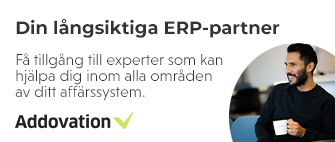The larger license contracts that Siemens is talking about on the software side were mainly reflected in new contracts on the PLM side in Asia, Australia and America in particular. This while revenues in Europe decreased somewhat, which does not prevent a number of larger and interesting investments from being carried out, for example sources within Sandvik state that they continue to invest in their software portfolio with Xcelerator components. Just as the electrification development at, for example, Volvo resulted in orders for Siemens software on the electronics, EDA and electrical side, such as Expedition and Capital software components for development work regarding harness, design of circuits and microcomputers.
New agreement with a company developing electric aircraft propulsion
In general, regarding Siemens’ reporting, it can be noted that, unlike tough competitor Dassault Systemes, it does not systematically report renewal agreements with already existing customers, but generally only reports new contracts.
In any case, among the agreements and user cases officially reported during Siemens’ third fiscal quarter – it may be that some customers do not want to make their purchases public for, for example, competitive or business reasons – there are the following:

Among others, the aircraft manufacturer Dovetail Electric Aviation, which works to develop sustainable aircraft solutions, has chosen Siemens Xcelerator software to design zero-emission, battery and hydrogen-electric propulsion systems for commercial aircraft. To optimize circular economy principles, the propulsion systems will be retrofitted in older aircraft used by regional airlines and leisure and cargo flights, helping them to reduce operating costs by up to 40%, while truly decarbonizing air transport. Headquartered in Australia and with operations in Spain, Dovetail is currently the only company in the world converting Cessna 208s to zero-emission batteries, and the only company designing a hydrogen-electric retrofit for the Beechcraft King Air, the most successful aircraft in its category. Dovetail recently signed Scandinavian Seaplanes as a client and counts Regional Express (Australia), Victorian Government (Australia), Air Nostrum (Iberia’s regional airline, Spain) and Volotea (Spain) among its investors or financial supporters.
Develops coffee machines in Solid Edge
Another outstanding order concerns Siemens’ mainstream CAD software, Solid Edge. This time, however, it is partly about a renewal agreement. Olympia Express, the world leader in handcrafted espresso machines, is using the Siemens Xcelerator portfolio to digitally transform the design and production of its world-renowned espresso machines. Schätti AG acquired the Olympia Express brand in 2011 and has since designed and manufactured Olympia Express products in Glarus, Switzerland using Siemens Solid Edge software to build on the company’s heritage and find new avenues for innovation and market development.
Thomas Schätti, CEO of Olympia Express commented on the investment as follows:
“When we took over the company, the previous owners had designed in 2D, so the data was very useful for us. The decision to switch to the Siemens Xcelerator software portfolio was driven by our need for precision and efficiency.”
Another example is the company Emotors, which uses Siemens Simcenter solutions for NVH testing of next-generation e-drive systems for vehicles. With the Xcelerator portfolio of industrial software, it is now developing and continuously improving its e-drive system for hybrids, plug-ins and fully electric vehicles (EVs).






